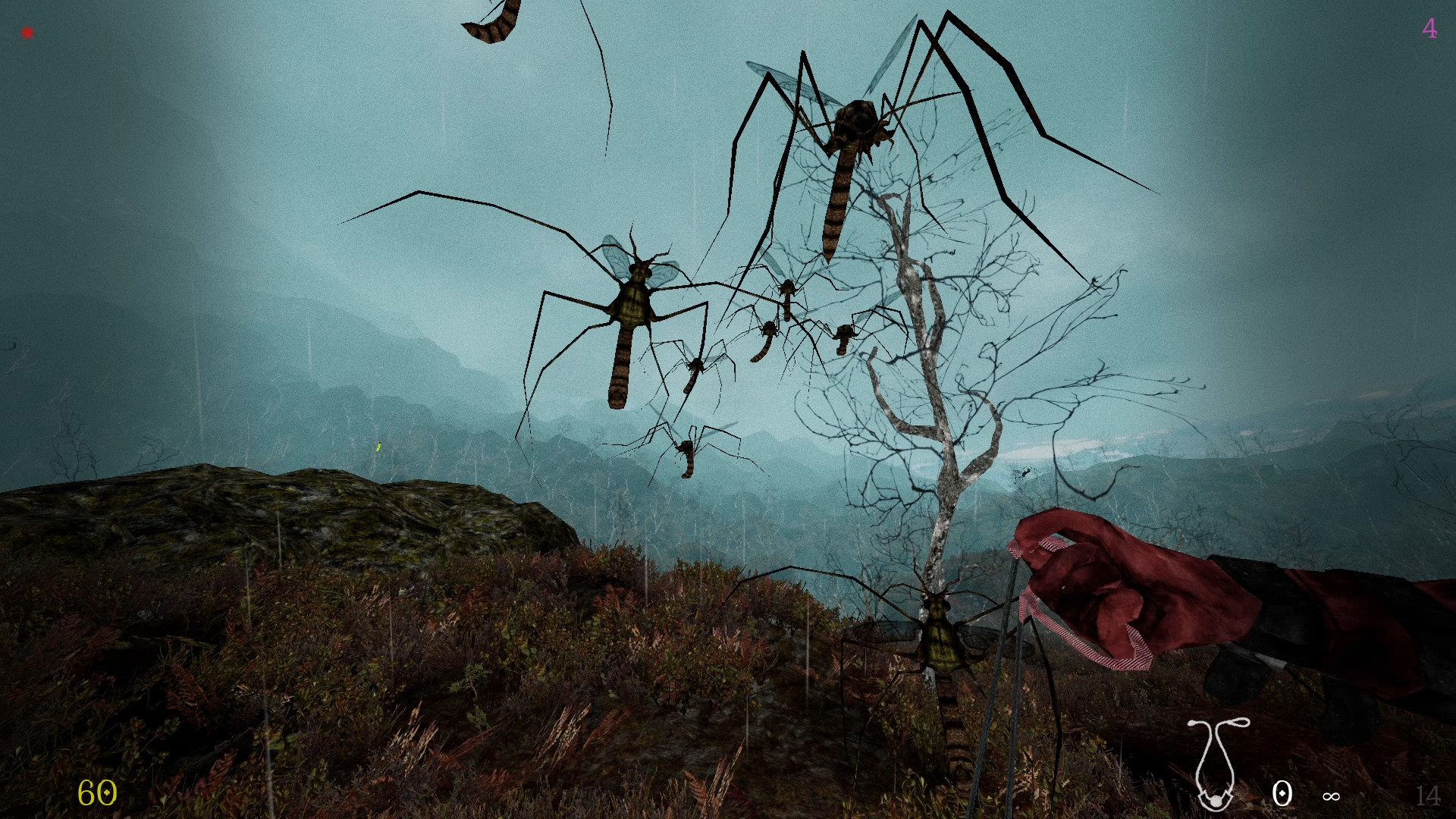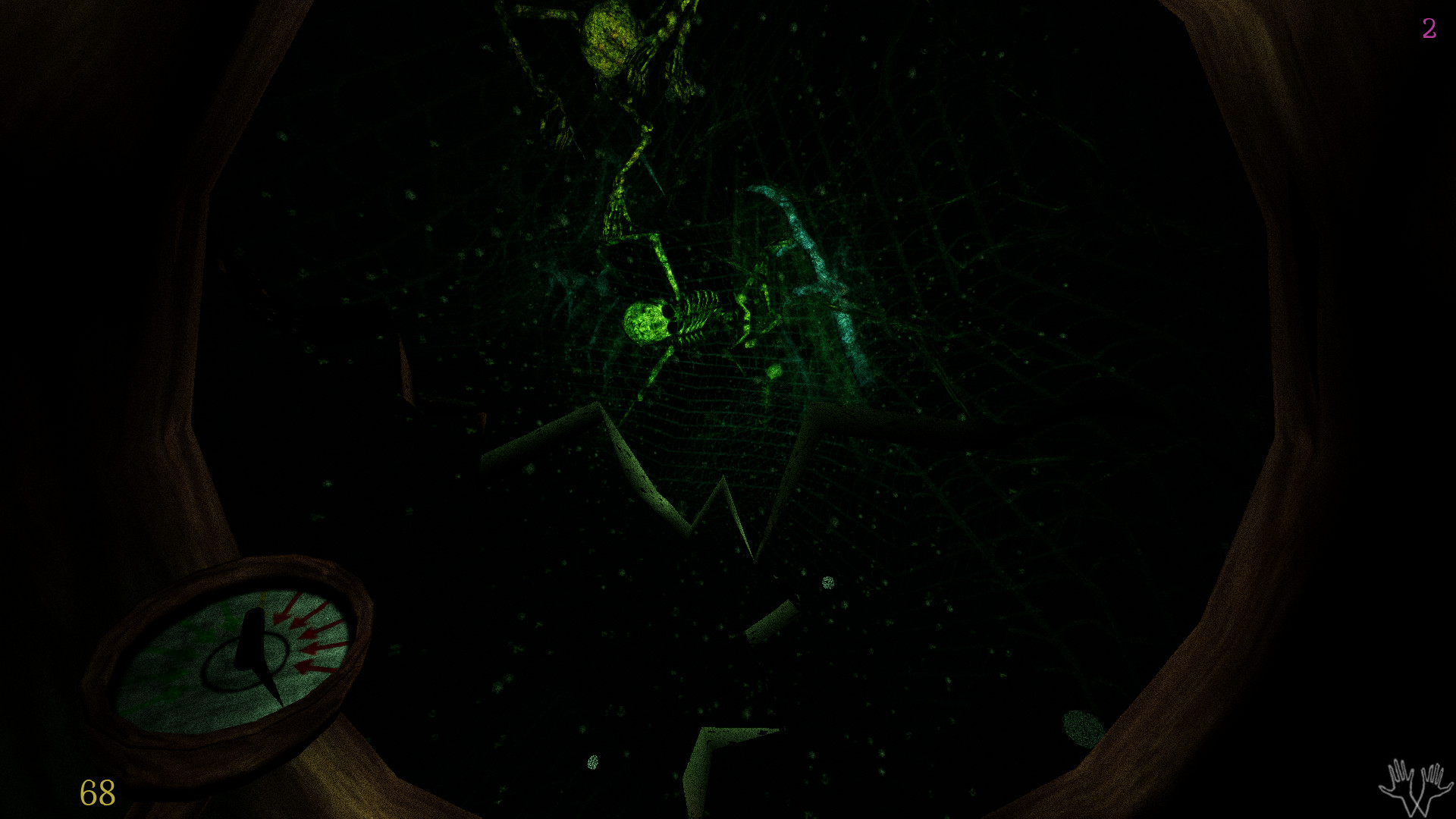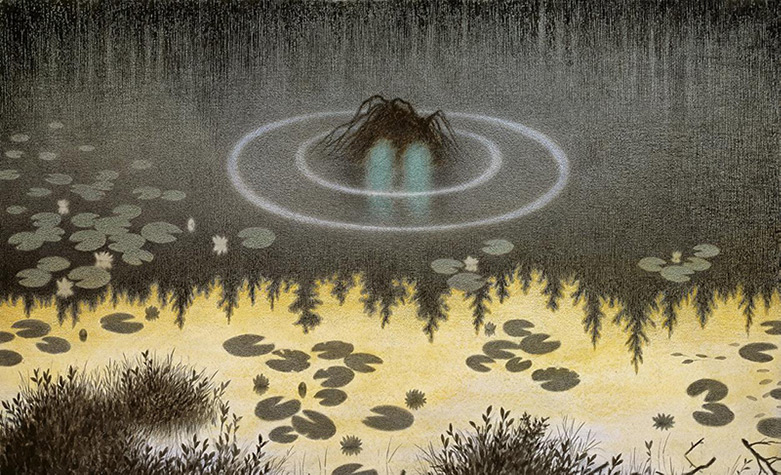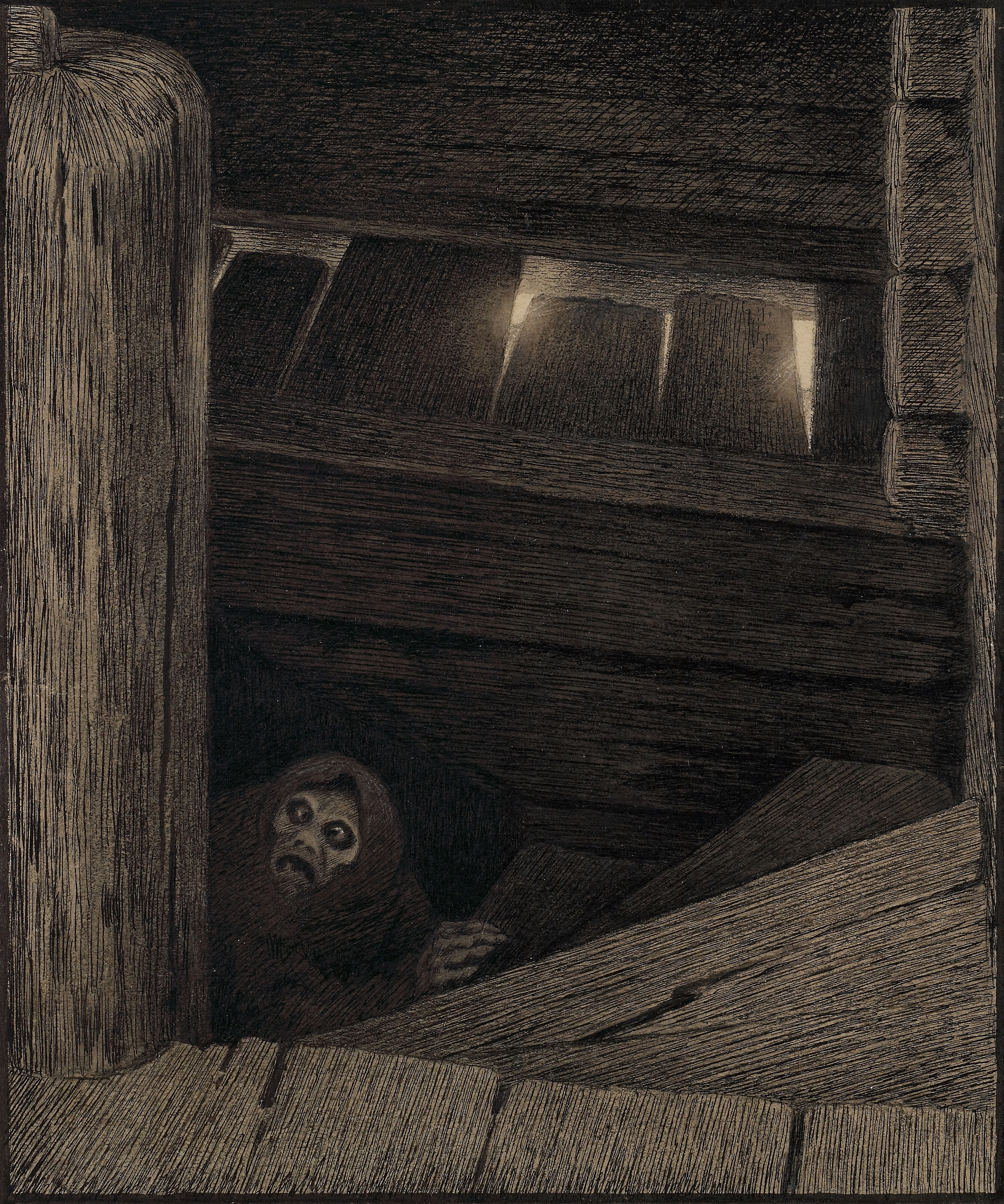Northern Journey opens with you controlling a guy in a rowboat, apparently having gotten lost among the Norwegian fjords. You turn and notice an operating lighthouse on a nearby island and a moment later some strange energy comes from near the lighthouse and pokes holes in your boat, forcing you to hurriedly row to the shore, arriving just before the boat sinks. You take a path up a hill and meet a strange man wearing a wolf's head, playing a flute, who tells you some things were stolen from him and he needs you to find them. A short way further in, you find a tiny village, but everything is strange. The constable is keeping some kind of demon or elf woman in his cell, there are tiny humanoid creatures scampering about who burrow into the earth when they see you coming closer, a little boy is torturing a thief locked in some stocks, something big is locked in a cellar under the church, and a there's a pair of witches keeping two black goats and boiling some strange green stuff in a cauldron. The whole place has a sense of wrongness similar to the atmosphere in Lovecraft's Innsmouth. With nothing else to do, you push forward on your mission to help the flute player get his stuff back.
In short order, you start accumulating weapons, starting with a sling, and you find yourself using them against the island's hostile wildlife, which is mostly represented by giant bugs. There's a variety of spiders who attack you, giant mosquitos, and trilobytes, among others. Northern Journey isn't a game that should be played by people with bug phobias. One particularly harrowing sequence has you creeping through a crevasse with a high tree canopy above, with giant ticks raining down on you. Unlike your average video game enemies, these creatures generally don't announce their presence with audio cues, but like real world predators and parasites they stay silent and they use camouflage to ambush you. Many jumpscares await, not with a trite musical sting but simply because you'll be shocked to see long arachnid legs noiselessly creeping up on you right as you thought you'd cleaned an area out.
There are some non-bug enemies. You'll face a few moose and bears, and there are some sheep that have gone mad because of the ticks hanging off of their bodies. And you eventually start encountering more overtly supernatural foes, many of which are drawn from Norwegian folklore. If you know your mythology, it won't take long to realize that the mysterious flute player, with his helpful wolves and ravens, is probably Odin and the cause of the rot in the land and the outburst of supernatural creatures is probably the handiwork of Loki. As often happens in the stories, Odin is using you as his instrument to clean up a mess whether you want to or not.
The game as a whole is a tribute to the Norwegian countryside. The creator, Øystein Pedersen (Slid Studio is just him), wanted to make a game that reflected his love of hiking through the places he knows in Norway. Despite the relatively modest graphics, the game looks real in a way many far more expensive games don't approach. There are steep hills and towering cliffs, grasses and weeds that sway in the breeze, heavy waterfalls and violent rapids (deep water is your worst enemy of all in this game), and sprawling bogs. Many of the textures used to create the vivid foliage were based on photos he took while hiking, and the game also incorporates his interest in scuba diving by including a couple of underwater levels. These levels are as scary as anything in the game but there's also a great sense of authenticity in how they depict the lack of light deep underwater and the lay of the depths. Same with the subterranean spaces - many of them are tight and claustrophobic as you'd find while doing actual spelunking. When you finally meet some undead skeletons, they don't stand upright like the usual Harryhausen skeletons but crawl at you on their bellies because they just came straight out of their graves and there isn't much room to stand in their cramped burial mounds.
Whatever nature didn't provide in inspiration was complemented by Norwegian artist Theodor Kittelsen. The game's poster is directly based on Kittelsen's Nokken painting from 1904, and when gazing on the misty landscapes in the game it can be hard to tell what was maybe taken from life and what was inspired by Kittelsen's work.
Pedersen also cited games like Skyrim as influences, mostly the sense of walking and exploring, although Northern Journey is not a walking simulator. In terms of how it plays, it's mostly a traditional and simple FPS. There are health and ammo pickups scattered around the levels and you're supposed to find newer and more interesting weapons. The weapons are quite uncommon, though. There are no guns in the game despite the presence of certain types of advanced technology (e.g., the diving sphere you use to explore the Nokkpond). The sling you obtain first is a viable weapon through the entire game, and beyond that you get a bow, throwing axes, multiple types of fast-loading crossbows, and spears. You do get some swords, but as there is no melee combat in the game, you throw the swords like everything else. Weapons also tend to be slow and require careful aiming that accounts for drops over distance while also leading targets, which gets tough when you're being swarmed by skittering bugs. Pedersen is experienced in the use of slings and archery in the real world, so he wanted to draw on that for his game. If nothing else, Northern Journey has the most well-implemented sling ever done in a video game.
Although there's some backtracking around the game's map, it's mostly a linear experience that's well-paced and is quick to make sure you're constantly seeing and doing new things. The only major gameplay issue is that it's easy to get hung up on parts of the environment, or to be a bit screwed over by the physics and end up slipping over a cliff because the character didn't have his footing. There's a lot of ground-level foliage, which is meant to hide enemies but has the downside of making the ground somewhat fuzzy and hard to read when engaged in combat or making difficult jumps. It's nothing insurmountable but it does lead to some frustration.
Leave it to a Norwegian to show how "the Northern Thing" is done. Pedersen has created a beautiful and scary as well as funny and melancholic game. "Happysad" as he describes it. It captures the flavor of folklore and it's weird. Not quirky modern weird but in the way people used to speak of weird tales. If Poul Anderson had lived to see it, I think he would have appreciated this game.










No comments:
Post a Comment